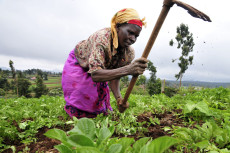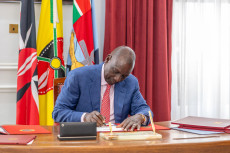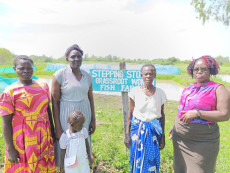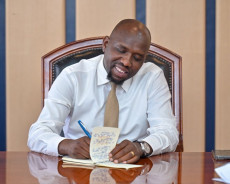- The centre also features a reverse osmosis system for water desalination and a fully equipped powerhouse with KPLC connection, generator, and battery backup systems, ensuring uninterrupted operations.
Interior Principal Secretary Raymond Omollo has announced that the construction of the National Mariculture Resource & Training (NAMARET) Centre in Shimoni, Kwale County, which began in August 2024, is progressing well and is expected to be completed within a year.
This will be the first National Marine Hatchery in Kenya, contributing to the country's aim of achieving a sustainable and inclusive Blue Economy, aligned with the Bottom-Up Economic Transformation Agenda (BETA).
“The Centre comprises three major components currently under development: a Marine Hatchery, which is already partly operational; a Resource Training Centre, with the first floor under construction; and advanced laboratories designed to support research, innovation, and training,” said PS Omollo.
PS Omollo notes that the hatchery has a production capacity of six to eight spawning cycles, translating to 4 to 5 million larvae annually at optimal operations. Among the hatchery's current activities is the breeding of prawns, a process that begins with fertilization.
Female prawns, which carry fertilized eggs in a pouch on their chest, are separated from males and transferred to a hatching unit. Once hatched, the seedlings are nurtured before being distributed, at no cost, to coastal farmers.
Read More
He has emphasized that this initiative empowers local communities by promoting marine farming and alleviating pressure on wild fisheries. To further support sustainable water management, the facility includes engineered wetlands that purify water between hatcheries and aid in circulation. Additionally, trial tanks for feed development and water storage are under construction.
The centre also features a reverse osmosis system for water desalination and a fully equipped powerhouse with KPLC connection, generator, and battery backup systems, ensuring uninterrupted operations.
The Resource Training Centre will be a three-storey structure designed to function as a typical university, offering academic and technical training in mariculture and related disciplines. This facility will play a crucial role in building local capacity, equipping youth and coastal residents with practical skills for employment and entrepreneurship within the Blue Economy.












